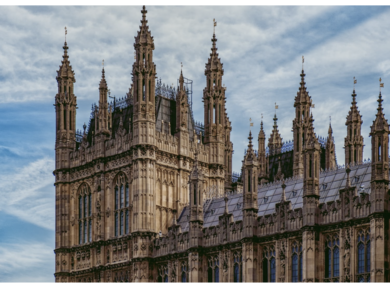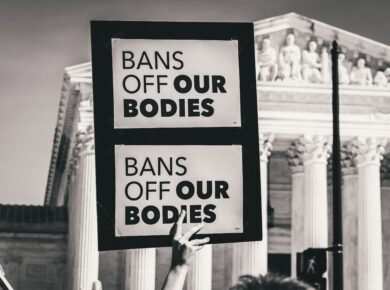Disclaimer:This blog post solely reflects the opinion of the authors and should not be taken to represent the general views of IPPR’s management/ editorial team or those of fellow authors.
It is a warm day near the coast in June. The exterior temperature is 25 degrees Celsius. It is twelve-thirty, I think. I dip my right foot into the salty water to check if I can jump right into the crystal water, or not. I decide to ease in the water gently by wiggling my toes in, my legs, my arms. Soon after, the rest of my body merges with the water. I jump in the water and perceive shiny dots on the sand. The more I swim, the more these dots on the sand, resembling pebbles, multiply. I take one away from the floor and I feel plastic. Plastic, plastic, plastic! My first instinct is to continue swimming. So, I do. Two minutes later, I turn around, in disgust, looking at the coast. The truth is, I feel uneasy that one of my favorite place–the beach–is turning into a dump: why would people in the community dump their stuff on a public piece of nature? The truth of the matter is, we do not have the same norms and values as individuals. As much as I care for this environment, it does not mean that everyone will share my enthusiasm and respect for this place.
There are two things which make individuals act or not. Firstly, their informal values. Secondly, what are called formal values, the laws and enforcement in each territory. Both feed into each other, because laws build norms, and norms build the judiciary and its applicability. So, how can policy-making mitigate the risks of plastic dumping, and of plastic in general? My personal thoughts remain that current environmental challenges only mount to the necessity of banning single-use plastic.
This question is, of course, a global one and looking at it from all angles is frankly impossible. However, it is a relatively new one in both the scientific community and policymaking. Attention was first drawn to plastic dumping cases in 1997 when researcher Charles Moore discovered what is now called “the Great Pacific Garbage Patch” which was located in the North Pacific and was, as the name suggests, the world’s largest plastic concentration zone. In spite of the discovery, the public remained relatively indifferent to plastic reduction and environmental protection. Today, the global clean-up effort remains weak, and there is still no efficient regulation on plastic dumping. In addition, plastic remains abundant in our everyday routines. We still shop at our local store, and we all buy fruits and vegetables wrapped in single-use plastic. Our takeaway containers are still made of plastic. Bon appétit!
One key reason why plastic is so problematic is that it breaks down into smaller pieces known as “microplastics”. The presence of these chemicals within the food chain can be the cause of damage to the nervous system and reproductive organs, which is fatal to human bodies.
By 2018, 127 out of 192 countries had chosen to mitigate the effects of plastic by implementing manufacturing bans. As with every policy issue, actions vary depending on the country’s resources and willingness to get into the heart of the matter. Considering the number of countries that have implemented bans, the issue is not inaction, but instead the quality of the laws passed. If a country wants to show its concern towards the crisis, it will pass a law. But if a country is committed to addressing the issue, it will sharpen the angles of the laws to ensure efficiency and monitoring.
Different countries’ approaches to plastic regulation shows the way policy design can yield different results. One example of this is the plastic ban in South Africa introduced in 2003. This ban focused on single-use plastic bags with a levy on retailed 24 liter bags. Furthermore, the ban was backed by the creation of a non-profit company in order to promote waste minimization and creating job opportunities. However, this ban lacked consistency because plastic bags were banned only for the food sector. Other industries such as the clothing industry were not affected by the ban. Nudging consumers to shift away from using plastic was insufficient as they did not have any incentives to change their behaviors. On top of that, enforcement was lacking, creating even fewer incentives to give up the use of plastic.
Even when policymakers are willing to take a step towards banning unnecessary plastic, there remains deep resistance from lobby groups representing oil corporations, supermarkets, and beverage companies unwilling to give up their share of the market. In the UK, the “Big Plastic” lobby pushed to reduce recycling targets, while simultaneously making themselves look like they are striving for sustainability. This campaign was quite successful as it pushed the UK’s recycling target from 57% to 49%. On top of that, the plastic industry funds projects of non-profit organizations and partners with international organizations. For instance, they fund projects for the United Nations Environment Programme (UNEP) and get involved in conferences regarding plastic pollution.
While there are alternatives to resist these powerful lobbies, making these changes is very difficult for consumers and limits their choices. Individuals can personally refuse to buy single-use plastics, or pressure their elected representatives to push for regulatory changes, such as large-scale bans on buying single-use plastic water bottles. However, the trade-off for consumers is beneficially weak. The effects of individual choices or bans, especially relative to the effort and inconvenience required, do little to change the enormous amount of plastic currently being dumped.
But there are other negative consequences of plastic bans which can discourage us from acting. The partial implementation of bans can have unintended consequences, such as civil and industrial disobedience, partly because of the risk of job losses or the lack of alternatives. In Hawaii, a ban on single-use plastic bags led to a 21.1% increase in shoplifting. In China, 80% of merchants from rural areas continued to use plastic in spite of a ban. On top of that, the Chinese ban led to the creation of a plastic bag black market. Beyond bans, replacing plastic bottles with other types of materials can be even more environmentally costly. For instance, bottles made of glass can be found to be more costly to transport than plastic, as transporting the heavier cargo in glass bottles requires 40% more energy.
Though these are valid remarks, it is important to recenter the debate on elements that matter on the bigger scale, such as the acceleration of climate change. Most of all, the costs and trade-offs of plastic bans should not be calculated based on short-term gains.
Recently, the plastic waste treaty was discussed at the United Nations Environment Assembly (UNEA) in Kenya. 173 countries adopted an ambitious resolution that would begin the process of reducing plastic production and pollution. While the resolution is promising, there are still challenges each country must address. Less developed countries will require financial assistance to make these changes, and it is still unclear how vested interests such as fossil fuels will react to these changes.
At the end of the day, plastic reduction remains a global challenge. It pushes us to acknowledge our responsibility even at the smallest scale. It’s our call to act individually and push our leaders to act upon our interests. Banning the common usage of plastic is not only necessary, but inevitable in the face of climate change. Perhaps the ideal scenario is getting out of our usual habits and learning to feel. Feel the distress of natural environments. Like dipping our toes into a lake and feeling. Feeling protective. Protective of this environment.
By Lina,
My name is Lina and I am a studying at University College London in 2nd year. I have many topics of interests such as sustainability or policy making in general. I am excited to voice my opinions and learn about new issues.







